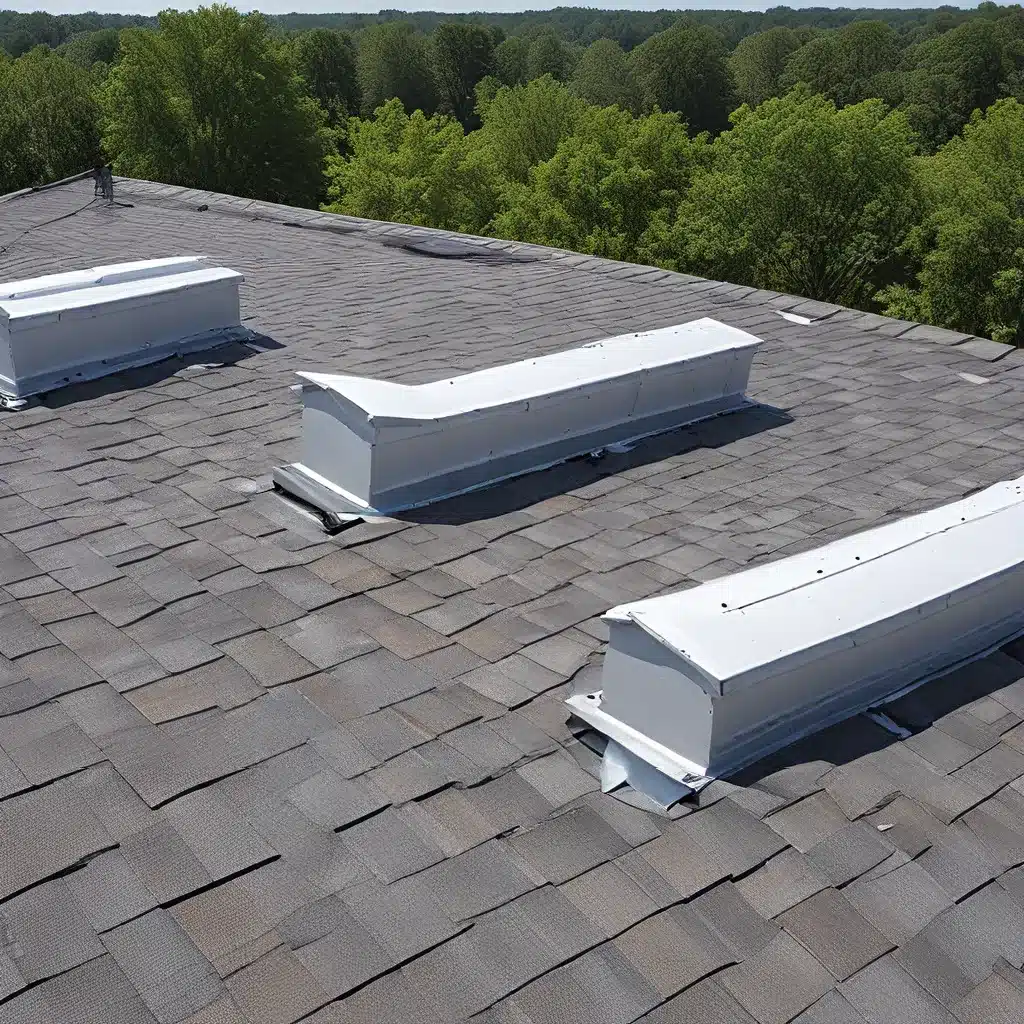
As someone who’s always been fascinated by the intersection of architecture, technology, and environmental sustainability, I can’t help but geek out about the topic of energy-efficient roofing. And when it comes to the unique climate challenges faced by homeowners in the South, the right ventilation strategies can make all the difference.
Passive Solar Design: Harnessing the Power of the Sun
Let’s start by diving into the concept of passive solar design. This approach to home construction takes advantage of a building’s site, climate, and materials to minimize energy use. The key is to first reduce heating and cooling loads through smart energy-efficiency measures, and then meet those reduced loads using solar energy.
Now, I know what you might be thinking – “But isn’t the South known for its scorching hot summers? How can passive solar design help with that?” Well, my friends, it’s all about finding the right balance.
A well-designed passive solar home in the South first focuses on reducing those cooling loads through strategies like proper shading, strategic window placement, and high-performance insulation. Only then does it tap into the power of the sun to meet the remaining heating needs. It’s a delicate dance, but when executed correctly, it can lead to some seriously impressive energy savings.
Thermal Mass and Ventilation: The Yin and Yang of Passive Cooling
One of the critical elements of passive solar design is the concept of thermal mass. This refers to the materials within the home that can absorb, store, and later release heat. Things like concrete, masonry, and even water-filled containers can act as thermal mass, helping to regulate the indoor temperature by smoothing out those daily temperature fluctuations.
But thermal mass is only half the story – the other crucial piece is ventilation. By strategically opening windows and using fans, you can harness the power of natural convection to flush out that hot, stale air and replace it with cooler, fresher breezes. And let me tell you, in the sweltering Southern summers, that can make all the difference in the world.
Striking the Balance: Optimizing Glazing and Shading
Of course, managing solar heat gain is a constant balancing act in passive solar design. Too much uncontrolled sunlight streaming through those south-facing windows can quickly lead to overheating and increased cooling loads. That’s where the proper placement and sizing of glazing (windows and skylights) comes into play.
The ideal ratio of glazing to thermal mass is highly dependent on your local climate. An experienced designer will use detailed computer simulations to find that sweet spot, ensuring that you’re maximizing the benefits of passive solar heating while minimizing the risk of summertime overheating.
And don’t forget about shading! Strategic use of overhangs, awnings, and landscaping can block that unwanted solar gain during the hot months, while still allowing the low-angle winter sun to warm your home. It’s all about finding the right balance.
Ventilating the Roof: Keeping a Lid on Energy Costs
Now, let’s talk about the roof itself. In the South, with its intense solar radiation and humid conditions, proper roof ventilation can be a game-changer when it comes to energy efficiency.
By incorporating features like ridge vents, soffit vents, and gable vents, you can create a continuous airflow that helps expel that hot, stuffy air from the attic space. This not only reduces the load on your air conditioning system but also helps prevent the buildup of moisture, which can lead to mold, mildew, and other costly issues.
And let’s not forget about the importance of cool roofing materials. By choosing lighter-colored, high-reflectivity shingles or coatings, you can dramatically reduce the amount of solar heat absorbed by the roof, further cutting down on your cooling needs.
Bringing it All Together: A Holistic Approach to Energy-Efficient Roofing
When it comes to optimizing the energy performance of your Southern home, a holistic, integrated approach is key. It’s not just about the roof – it’s about carefully considering the entire building envelope, the local climate, and the interplay of all the different design elements.
That’s why it’s so important to work with experienced professionals who understand the nuances of passive solar design and energy-efficient roofing strategies. They can help you navigate the various tradeoffs, identify the most cost-effective improvements, and create a custom solution that perfectly fits your home and your lifestyle.
And who knows, you might even find that your energy-efficient roofing upgrade unlocks some unexpected benefits, like improved indoor air quality, a more comfortable living space, and maybe even a little extra pocket change from those lower utility bills. It’s a win-win-win in my book!
So, if you’re a Southern homeowner looking to take your energy efficiency game to the next level, I’d highly recommend exploring the world of passive solar design and advanced roofing ventilation strategies. Trust me, your wallet and the planet will thank you.
Now, I know I’ve only scratched the surface of this fascinating topic, and there’s so much more we could dive into. But I’ll leave you with this final thought: the future of sustainable, energy-efficient housing is bright – and it all starts with the roof over your head. Happy building, my friends!